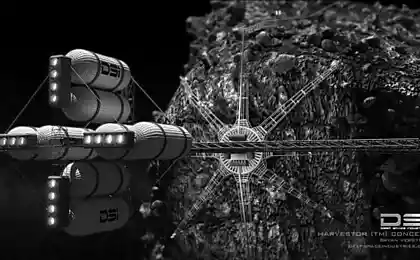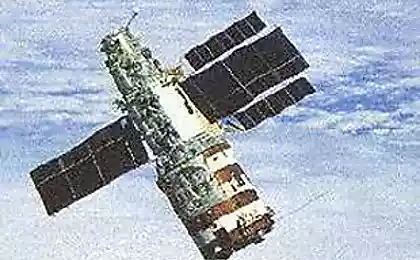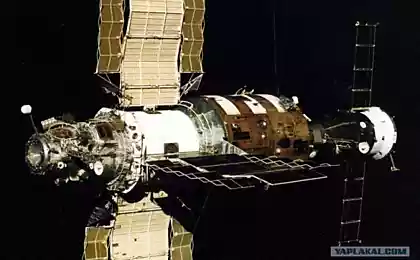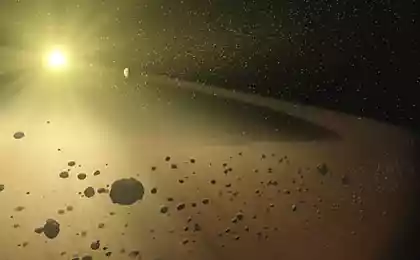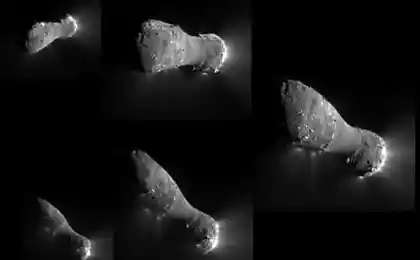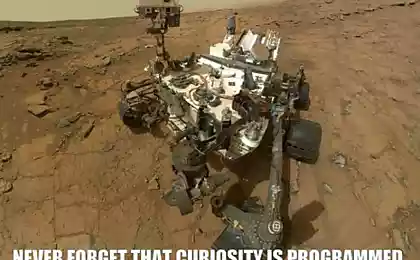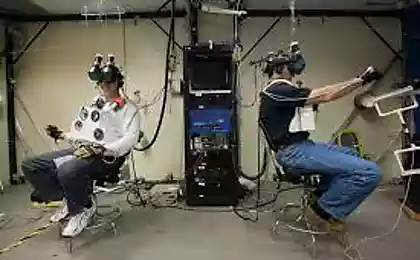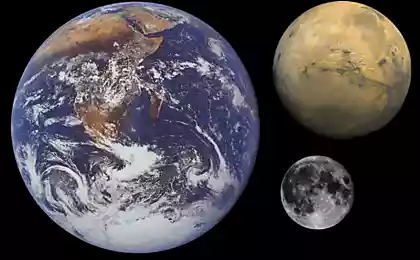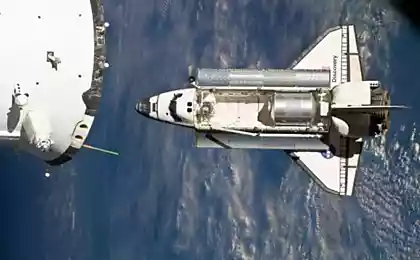266
Never a fantasy: mining resources in space
What about mining natural resources on asteroids? Asteroids have more of these resources than have been mined in Earth’s history. In just 100 years, we can end all resource wars simply because we have access to unlimited wealth in our backyard, our solar system.
Is that possible? What can we get in space? Will it really bring peace to our world, or will it fuel more conflict and competition? Perhaps looking at the past and the future will help us answer some of these questions.
Never a fantasy.
Literally over the past two years, quite a lot of events have occurred in our world, which allowed us to talk about the extraction of resources on stone debris, aimlessly wandering through our star system, quite confidently. One company planning to mine asteroid resources, Planetary Resources, has launched its first spacecraft from the International Space Station. It was the company’s second attempt after the first, which failed with the launch of Antares.
Another asteroid miner, Deep Space Industries (DSI), has won two NASA grants. One aimed to explore the possibility of creating rocket fuel from asteroid materials, and the other to create an asteroid regolith simulator so that equipment could be tested on Earth. DSI was then awarded a contract to help build a BitSat satellite to transmit Bitcoin transactions.
The Australian Space Research Center at the University of New South Wales (UNSW) and NASA’s Jet Propulsion Laboratory have also received funding to explore the possibility of extracting water to support NASA’s planned Martian colony.
In the United States, the ASTEROIDS Act (such an acronym) was successfully renamed the Space Resources Exploration and Use Act and was approved by Congress. It should close the gaps in the Outer Space Agreement related to ownership of space resources. According to the law, “any resources mined in outer space are the property of the person who extracted those resources and are therefore subject to the right of ownership, in accordance with applicable federal law provisions.”
The UNSW study found that for an individual, iron-rich asteroid, given the existence of a market and other assumptions, the investment would be recaptured in 85 years if the ore were sent to Earth, and as little as 5 years if used in space.
Not that expensive. Despite all this activity, skeptics doubt the prospects of space mining in terms of money and time. Obviously, mining resources in space will be expensive. The total budget of the project, in which Curiosity was sent to Mars and maintained for 14 years, was $ 2.5 billion.
But extracting resources on Earth is also not cheap. Development and production costs are estimated at hundreds of millions of dollars. This money companies spend trying to find new earth deposits. The extraction of fossil resources stretches for decades. Time and cost will be comparable to space. Why not just go into space and get resources there? To be. Where to start? To begin with, research suggests that using iron ore in space is much easier than returning it to Earth (assuming there is a market in space).
For high-cost commodities such as rare earth minerals or platinum group metals, you might consider sending them to Earth, but “conventional” resources that can be mined in space are better used there.
A common argument comes down to the fact that launching a cargo from Earth into space costs 20,000 dollars per kilogram, so if you produce this kilogram in space cheaper than 20,000 dollars, you can save a lot and get into the plus.
SpaceX, for example, posts its launch costs on the site. Currently, for Falcon 9, that figure is $12,600. But there is no market as such, and it may need to be artificially pushed (for example, NASA may contract to deliver water in orbit). Without such a push, the initial demand for water may appear in space tourism, but it is more likely that the refueling of satellites will be more active. Water can be split into oxygen and hydrogen, then used as fuel for satellites.
World Peace or the Wild West? In terms of world peace, there are a number of problems with the U.S. Outer Space Act, as it is inconsistent with existing treaties and is likely to be ignored in other countries, with no legal effect. But over time, slow processes will finally put everything within the legal framework. And yet, before there is peace in space, it is possible that space piracy will develop.
In November, world leaders and representatives of space mining companies will meet in Sydney to discuss the challenges of future resource extraction beyond Earth. In order to achieve maximum interaction between space experts and mining experts, it was decided to combine this event with the third Future Mining Conference. Perhaps, after its passage, we will learn a lot of new and promising things about this undoubtedly interesting milestone of our future. published
P.S. And remember, just changing our consumption – together we change the world!
Source: hi-news.ru/space/dobycha-resursov-v-kosmose-nachnetsya-ochen-skoro.html
Is that possible? What can we get in space? Will it really bring peace to our world, or will it fuel more conflict and competition? Perhaps looking at the past and the future will help us answer some of these questions.
Never a fantasy.
Literally over the past two years, quite a lot of events have occurred in our world, which allowed us to talk about the extraction of resources on stone debris, aimlessly wandering through our star system, quite confidently. One company planning to mine asteroid resources, Planetary Resources, has launched its first spacecraft from the International Space Station. It was the company’s second attempt after the first, which failed with the launch of Antares.
Another asteroid miner, Deep Space Industries (DSI), has won two NASA grants. One aimed to explore the possibility of creating rocket fuel from asteroid materials, and the other to create an asteroid regolith simulator so that equipment could be tested on Earth. DSI was then awarded a contract to help build a BitSat satellite to transmit Bitcoin transactions.
The Australian Space Research Center at the University of New South Wales (UNSW) and NASA’s Jet Propulsion Laboratory have also received funding to explore the possibility of extracting water to support NASA’s planned Martian colony.
In the United States, the ASTEROIDS Act (such an acronym) was successfully renamed the Space Resources Exploration and Use Act and was approved by Congress. It should close the gaps in the Outer Space Agreement related to ownership of space resources. According to the law, “any resources mined in outer space are the property of the person who extracted those resources and are therefore subject to the right of ownership, in accordance with applicable federal law provisions.”
The UNSW study found that for an individual, iron-rich asteroid, given the existence of a market and other assumptions, the investment would be recaptured in 85 years if the ore were sent to Earth, and as little as 5 years if used in space.
Not that expensive. Despite all this activity, skeptics doubt the prospects of space mining in terms of money and time. Obviously, mining resources in space will be expensive. The total budget of the project, in which Curiosity was sent to Mars and maintained for 14 years, was $ 2.5 billion.
But extracting resources on Earth is also not cheap. Development and production costs are estimated at hundreds of millions of dollars. This money companies spend trying to find new earth deposits. The extraction of fossil resources stretches for decades. Time and cost will be comparable to space. Why not just go into space and get resources there? To be. Where to start? To begin with, research suggests that using iron ore in space is much easier than returning it to Earth (assuming there is a market in space).
For high-cost commodities such as rare earth minerals or platinum group metals, you might consider sending them to Earth, but “conventional” resources that can be mined in space are better used there.
A common argument comes down to the fact that launching a cargo from Earth into space costs 20,000 dollars per kilogram, so if you produce this kilogram in space cheaper than 20,000 dollars, you can save a lot and get into the plus.
SpaceX, for example, posts its launch costs on the site. Currently, for Falcon 9, that figure is $12,600. But there is no market as such, and it may need to be artificially pushed (for example, NASA may contract to deliver water in orbit). Without such a push, the initial demand for water may appear in space tourism, but it is more likely that the refueling of satellites will be more active. Water can be split into oxygen and hydrogen, then used as fuel for satellites.
World Peace or the Wild West? In terms of world peace, there are a number of problems with the U.S. Outer Space Act, as it is inconsistent with existing treaties and is likely to be ignored in other countries, with no legal effect. But over time, slow processes will finally put everything within the legal framework. And yet, before there is peace in space, it is possible that space piracy will develop.
In November, world leaders and representatives of space mining companies will meet in Sydney to discuss the challenges of future resource extraction beyond Earth. In order to achieve maximum interaction between space experts and mining experts, it was decided to combine this event with the third Future Mining Conference. Perhaps, after its passage, we will learn a lot of new and promising things about this undoubtedly interesting milestone of our future. published
P.S. And remember, just changing our consumption – together we change the world!
Source: hi-news.ru/space/dobycha-resursov-v-kosmose-nachnetsya-ochen-skoro.html
Could tiny black holes cause the universe to collapse?
The relocation of consciousness to the digital world


